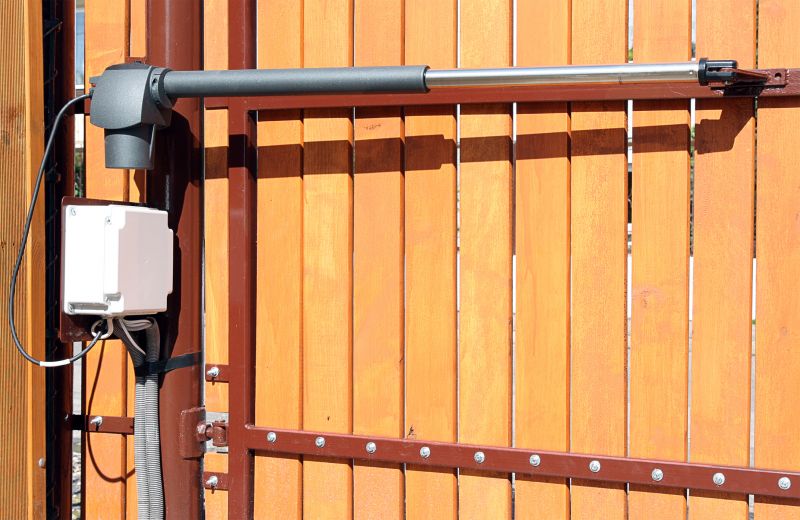Ultimate Guide to Essential Gate Opener Installation Products
Discover the must-have tools and components that ensure a smooth and efficient gate opener installation process.
 Installing a gate opener can significantly enhance the convenience and security of residential or commercial properties. When considering products for gate opener installations, it is important to evaluate the compatibility with existing gate structures, power sources, and desired control mechanisms. Gate openers come in various designs, including swing, slide, and barrier arm types, each suited to different gate configurations and space constraints. Proper installation not only ensures smooth operation but also prolongs the lifespan of the equipment, making it essential to select high-quality components and accessories.
Installing a gate opener can significantly enhance the convenience and security of residential or commercial properties. When considering products for gate opener installations, it is important to evaluate the compatibility with existing gate structures, power sources, and desired control mechanisms. Gate openers come in various designs, including swing, slide, and barrier arm types, each suited to different gate configurations and space constraints. Proper installation not only ensures smooth operation but also prolongs the lifespan of the equipment, making it essential to select high-quality components and accessories.
Top Overall Option
Heavy-Duty Gate Opener System
A versatile and durable gate opener system designed for various gate types and sizes, featuring multiple access options, safety sensors, and weather-resistant construction. It offers smooth operation and reliable performance suitable for both residential and commercial settings.
Types of Products For Gate Opener Installations
Swing Gate Openers
Designed for gates that swing open inward or outward, these openers typically use hydraulic or electromechanical mechanisms for smooth operation.
Slide Gate Openers
Ideal for gates that slide horizontally along a track, these openers are suitable for properties with limited space or specific gate configurations.
Barrier Arm Gates
Commonly used in commercial or parking lot settings, barrier arm systems control vehicle access with a retractable arm mechanism.
Wireless Remote Controls
Devices that allow users to operate gate openers remotely, offering convenience and quick access.
Keypad Entry Systems
Secure access control via numeric keypads, enabling authorized users to open gates with a code.
Smartphone Control Modules
Enable gate operation through mobile apps, providing remote access and automation integration.
Safety Sensors and Detectors
Devices that detect obstacles or people in the gate's path to prevent accidents and ensure safe operation.
Solar Power Kits
Solar-powered components that reduce reliance on electrical wiring, suitable for remote or off-grid locations.
Battery Backup Systems
Ensure gate operation during power outages, maintaining security and access at all times.
Wireless Intercom Systems
Allow communication with visitors before granting access, often integrated with gate control units.
Gate Locking Mechanisms
Additional security features to secure gates when not in use or during emergencies.
Infrared Beams
Invisible beams that detect movement or presence to prevent gate closure on obstacles.
Wireless Gate Alarms
Alert systems that notify owners of unauthorized access or tampering attempts.
Gate Track Accessories
Components like rollers, tracks, and guides that facilitate smooth sliding or swinging of gates.
Remote Access Key Fobs
Compact devices that provide quick remote control for gate operation.
Popular Choices
Widely used for their convenience, allowing users to open gates from a distance with a simple press.
Popular for secure access, enabling authorized users to open gates with a code.
Commonly selected for properties with limited space, offering reliable sliding operation.
Preferred for traditional gate designs, providing smooth swinging motion.
Ensuring continuous operation during power outages, a key feature in many installations.
Trending for their integration with mobile devices, offering remote operation and monitoring.
Increasingly popular for safety, preventing gate closures on obstacles or people.
Growing in popularity for off-grid setups, reducing reliance on electrical wiring.
Common for property access control, allowing communication with visitors before opening gates.
Often used for safety and obstacle detection, enhancing overall gate operation safety.
Popular for added security, especially in high-traffic or sensitive areas.
Convenient for frequent users, enabling quick remote gate operation.
Many gate opener systems support multiple access options such as remote controls, keypad entry, or smartphone integration. These features add flexibility and ease of use, allowing users to operate gates from a distance or through automation systems. Additionally, safety features like obstacle detection and auto-reverse functions are crucial for preventing accidents and ensuring compliance with safety standards. When planning an installation, it is also vital to consider local electrical codes and to employ suitable wiring and grounding techniques.
Durability and weather resistance are key factors, especially for outdoor installations exposed to elements like rain, snow, or extreme temperatures. Selecting products with robust construction and weatherproof ratings can help maintain reliable operation over time. Maintenance requirements and ease of repair should also influence product choice, with modular components and clear installation instructions making ongoing upkeep more manageable. Ultimately, choosing the right products for gate opener installation involves balancing functionality, safety, and durability to meet specific site needs.
Key Buying Considerations
- Gate type compatibility (swing, slide, barrier) and size limitations.
- Power source options, including electrical wiring, solar, or battery backup.
- Control access methods such as remotes, keypads, or smartphone apps.
- Weather resistance and durability for outdoor installation environments.
- Safety features like obstacle detection sensors and auto-reverse functions.
- Installation complexity and whether professional assistance is recommended.
- Compatibility with existing security systems or automation platforms.
- Frequency of use and expected traffic volume to select appropriate motor strength.
- Maintenance requirements and ease of repair or replacement of components.
- Compliance with local electrical and safety codes.
- Additional security features like locks or alarms.
- Range of remote control operation and signal strength.
- Power consumption and energy efficiency, especially for solar options.
- Warranty and customer support from the manufacturer.
- Cost considerations balanced with quality and features.
